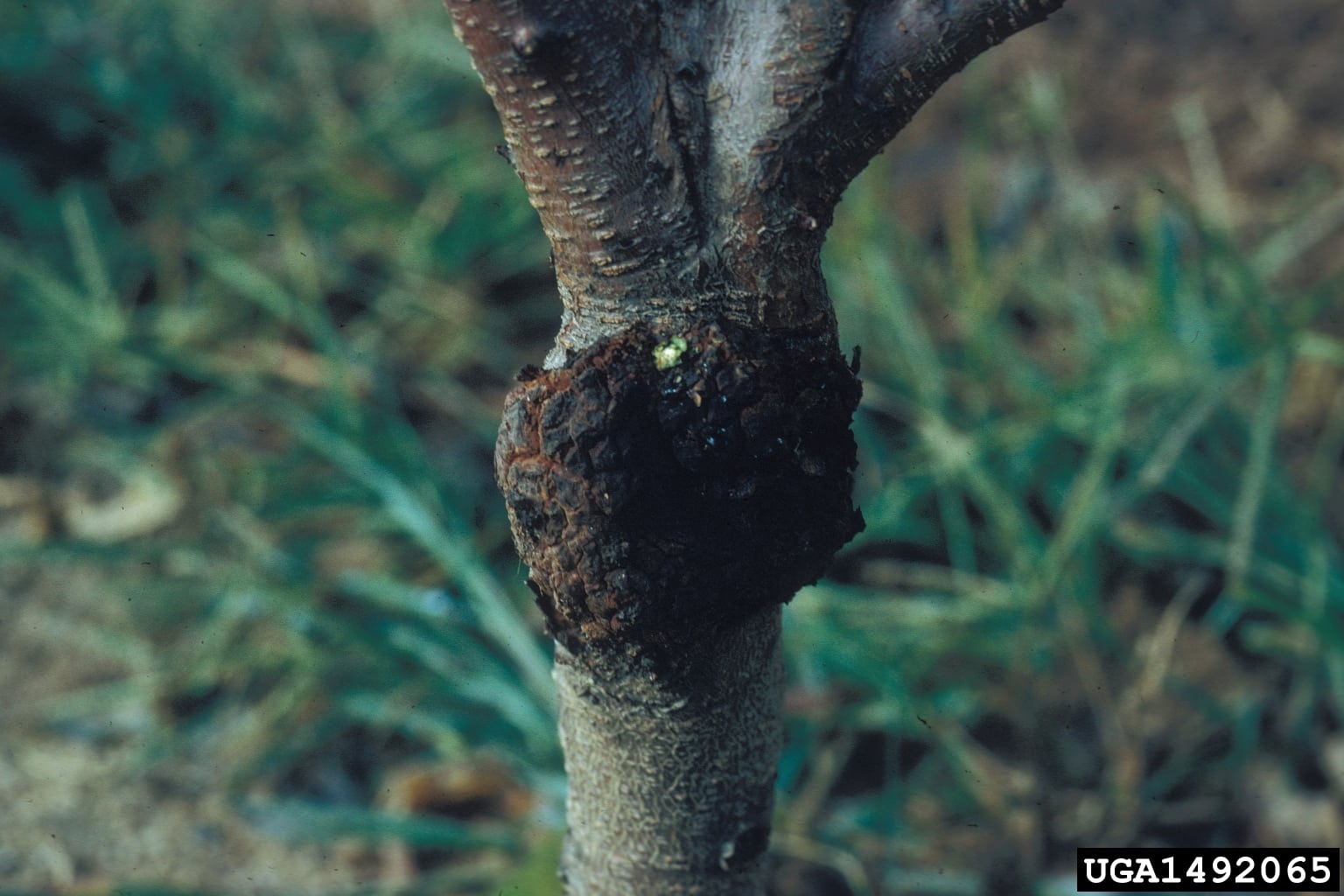Peach Crown Gall Control: Learn How To Treat Peach Crown Gall


Crown gall is a very common disease that affects a wide range of plants the world over. It is especially common in fruit tree orchards, and even more common among peach trees. What causes peach crown gall, and what can you do to prevent it? Keep reading to learn more about peach crown gall control and how to treat peach crown gall disease.
About Crown Gall on Peaches
What causes peach crown gall? Crown gall is a bacterial disease caused by the bacterium Agrobacterium tumefaciens. Typically, the bacteria enter the tree through wounds in the bark, which can be caused by insects, pruning, improper handling, or other environmental factors. Once inside the peach tree, the bacteria transforms healthy cells into tumor cells, and galls begin to form. The galls appear as small, wart-like masses on the tree’s roots and crown, though they can also develop higher on up the trunk and branches. They start out soft and light in color, but will eventually harden and deepen to dark brown. They can be half an inch to 4 inches (1.5-10 cm.) in diameter. Once the crown gall bacteria infects the tree’s cells, tumors may develop far from the original wound, where the bacterial aren’t even present.
How to Treat Peach Crown Gall
Peach crown gall control is mostly a game of prevention. Since the bacteria enter the tree through wounds in the bark, you can do a lot of good simply by avoiding injury. Manage pests to keep insects from boring holes. Hand pull weeds near the trunk, instead of weed whacking or mowing. Prune judiciously, and sterilize your shears between cuts. Handle saplings very carefully during transplant, as small trees can be damaged more easily, and crown gall is more devastating to their health. Antibacterial drenches have shown some promise for fighting crown gall on peaches, but for now, the prevailing treatment is simply to remove infected trees and start over again in a new, uninfected area with resistant varieties.
Gardening tips, videos, info and more delivered right to your inbox!
Sign up for the Gardening Know How newsletter today and receive a free copy of our e-book "How to Grow Delicious Tomatoes".

The only child of a horticulturist and an English teacher, Liz Baessler was destined to become a gardening editor. She has been with Gardening Know how since 2015, and a Senior Editor since 2020. She holds a BA in English from Brandeis University and an MA in English from the University of Geneva, Switzerland. After years of gardening in containers and community garden plots, she finally has a backyard of her own, which she is systematically filling with vegetables and flowers.
-
 How To Make A Bouquet Garni Or Herb Bundle For Cooking
How To Make A Bouquet Garni Or Herb Bundle For CookingIf you’re a great cook, you may have made an herb bundle before. If this is a new idea, learn how to add sparkle and interest to your dish with a bouquet garni.
By Amy Grant
-
 ‘Coral Charm’ Peony Care For Sublime Semi-Double Peonies With Lush Salmon Pink Flowers
‘Coral Charm’ Peony Care For Sublime Semi-Double Peonies With Lush Salmon Pink FlowersPeonies are known for their soft baby pink or magenta tones, but if plushy coral blooms are your thing, here’s our guide to the ultimate ‘Coral Charm’ peony care
By Tonya Barnett